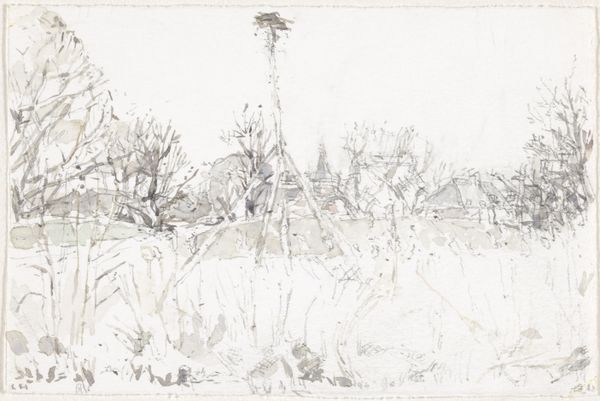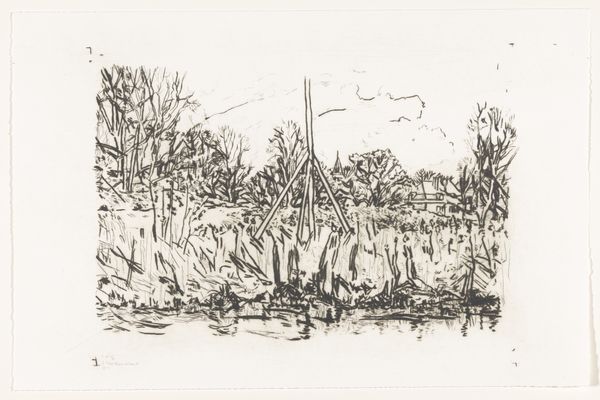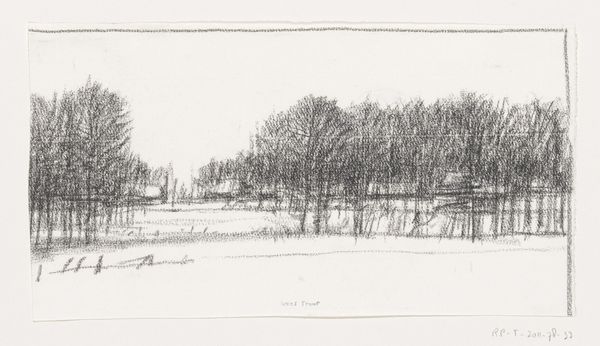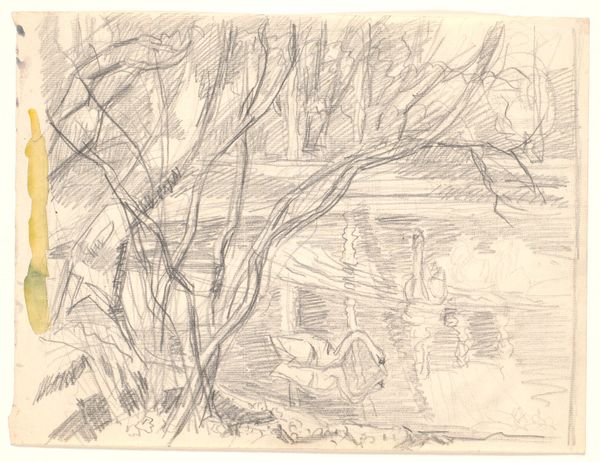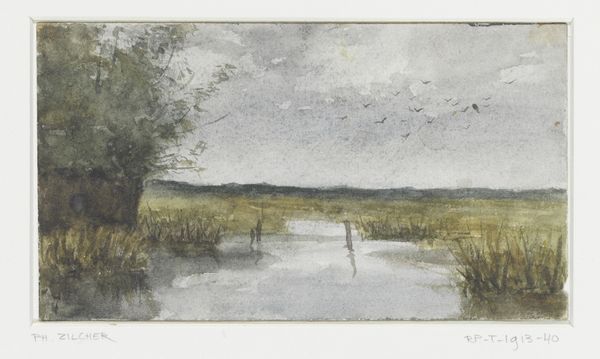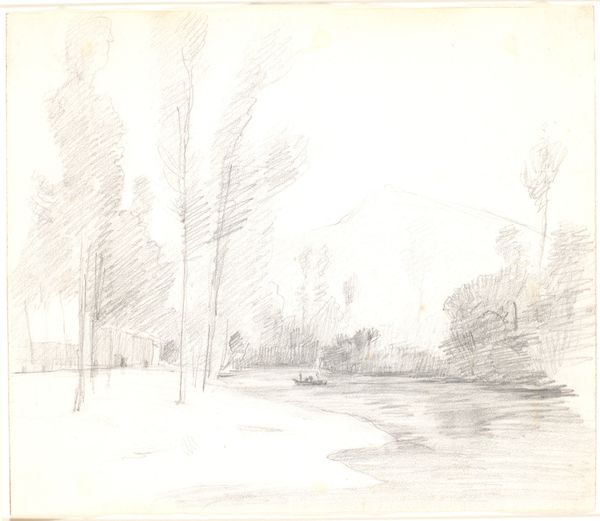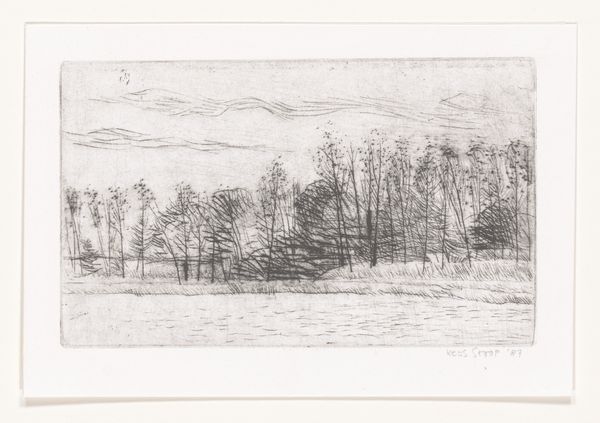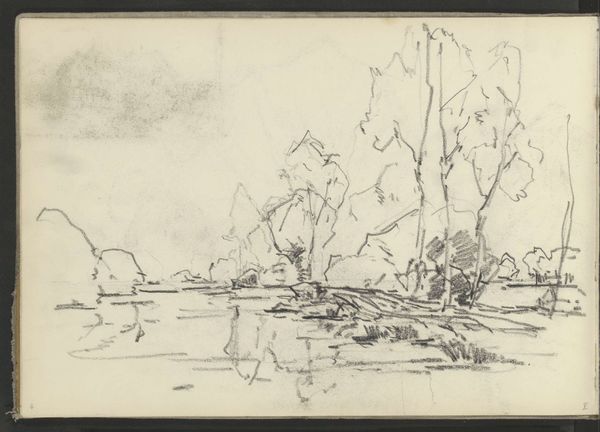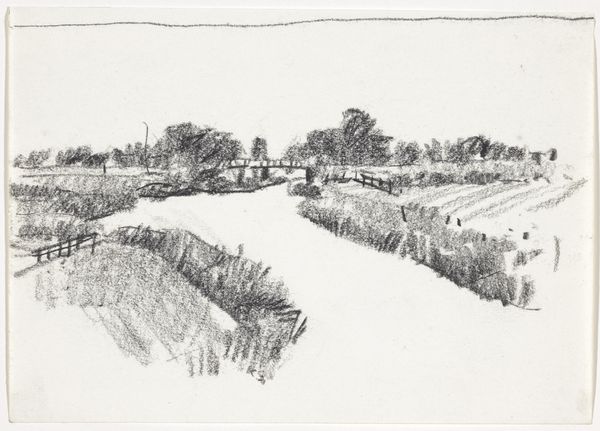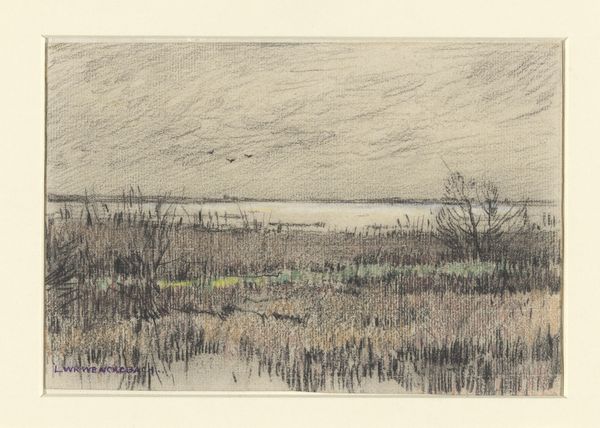
Dimensions: height 242 mm, width 363 mm
Copyright: Rijks Museum: Open Domain
Editor: This ink and paper drawing is titled "Vondelpark voorjaar" and it was created in 2011 by Lau Heidendael, seemingly en plein air. There's something peaceful and almost dreamlike about it. I'm curious, what historical or cultural contexts do you see influencing this work? Curator: Seeing a contemporary artist drawing *en plein air*, one wonders about the legacy of Impressionism and its democratization of art-making. This drawing immediately makes me consider the politics inherent in depicting a public space like Vondelpark. Whose park is it, really? Who has access, who feels welcome? How has its use evolved? And what role does art play in shaping public perception and use of such a space? Editor: That's interesting, I hadn't considered the politics of depicting a park. I guess I was more focused on the "spring" aspect from the title. Is it suggesting hope? Curator: Springtime imagery is rarely neutral. Historically, representations of spring have been intertwined with socio-political movements – from pastoral romanticism reflecting anxieties around industrialization to more direct associations with rebirth and revolution. Looking closer at this Vondelpark, how does Heidendael's technique – the immediacy of ink, the sketch-like quality – contribute to the social narrative of the park? Does it invite engagement, or present a more detached observation? Editor: I think it feels very inviting. The lightness of the lines makes it feel like a personal snapshot, like the viewer is invited to observe alongside the artist. Curator: Indeed. And that accessibility is significant. Contemporary art in public spaces, whether through direct intervention or representations like this, increasingly aims to foster dialogue and question existing power dynamics. Is the piece a challenge to the established art world? Or is it now just decor? Where are the new political artworks showing today, and what has happened to street art? Editor: I see what you mean. I never really thought about how something as simple as a park drawing could reflect so many complex ideas. Curator: Art, particularly art depicting everyday life, often serves as a mirror to society. It reveals both our conscious values and unconscious biases, prompting us to reflect on our shared spaces and experiences. I hadn't thought about it that way.
Comments
No comments
Be the first to comment and join the conversation on the ultimate creative platform.
